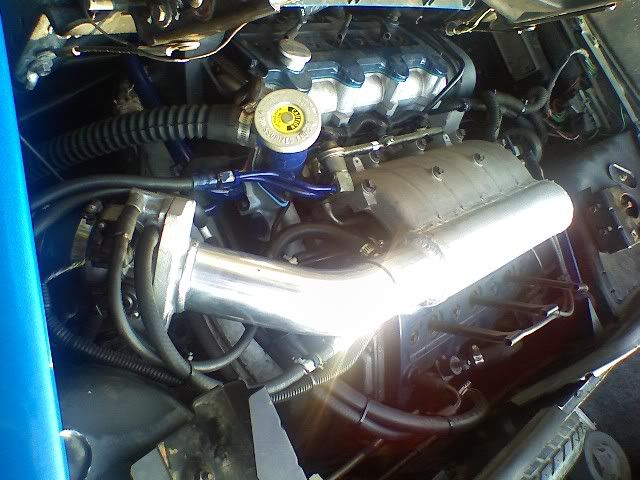Now for some of the math behind all of this:
1.) David Vizards Formula The general rule is that you should begin with a runner length of 17.8 cm for a 10,000 rpm peak torque location, from the intake opening to the plenum chamber. You add 4.3 cm to the runner length for every 1000 rpm that you want the peak torque to occur before the 10,000 rpm.
For 6000 RPM, Length = 35cm
----------------------------------------
2.) Another Formula to Calculate Runner Length for a Specific Peak Torque RPM: from Steve Magnante at Hot Rod magazine N x L = 84,000 where N represents the desired engine rpm for peak torque and L is the length in inches from the opening of the runner tube to the valve head.
For 6000 RPM, L = 14.0" or 35.56 centimeters from the plenum to the valve head
So, the runners need to be cut back, so that the total length of the runner from the back of the valve to the plenum is 14 inches long - a bit shorter than stock. Next I found a rule of thumb in the book "How to Tune and Modify Engine Management Systems" by Jeff Hartman. Look it up on Google Books, pages 119 to 121 are all you need. The book suggests a plenum size of 40-50% for a V8 and 50-60% for a 4 cylinder. My assumption is that ~50% would be suitable for a V6. The book goes on to suggest subtracting 10-15% for engines operating at 7000-7500 RPM, and to add 30% for a torque boost at 2500-3500. The width of the runners is approximately 13.5", so using 3.5" pipe spanning all 6 runners = 129 Cubic Inches, or 62% of engine displacement, which is in the ballpark.
The book goes on to show you how to select size and length of ram pipe between throttle body and plenum. The length determines when it becomes resonant (and gives a natural ram-charging effect of its own), and the diameter determines the highest air velocity will get. It turns out GM's stock 2.75" diameter is dead on for 180 ft/second max airflow for this engine (which they recommend not to exceed), so I built my ram pipe from 2.75" pipe, to 12" in length - which is what the deal is with the goofy looking long throttle body arm.
And, even with all of the math and guidelines, I was still surprised to see that it does exactly what I was hoping for, and then some. If you're considering building a custom intake manifold, do some research and take a scientific approach, and you can achieve great results!
[This message has been edited by Blue Shift (edited 10-20-2009).]



















